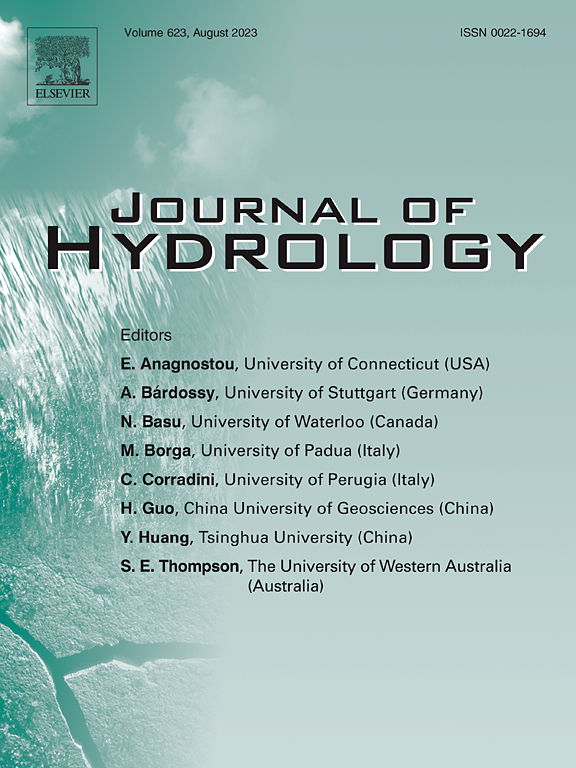Future and present susceptibility to thermokarst hazards in the Northern Hemisphere using an interpretable CNN method
IF 6.3
1区 地球科学
Q1 ENGINEERING, CIVIL
引用次数: 0
Abstract
Degradation of ice-rich permafrost throughout the Northern Hemisphere has triggered the formation of thermokarst hazards, such as thermokarst lakes and thaw slumps, which are rapidly developing under the influence of climate change. However, assessing the potential spatial distribution of thermokarst lakes and thaw slumps on a global scale remains a challenge. Therefore, a deeper understanding of thermokarst hazards is necessary to predict their dynamics and global implications under climate warming. In this study, we constructed thermokarst hazard inventories and multiple conditioning factors and predicted the thermokarst hazard susceptibility map in the Northern Hemisphere based on interpretable convolutional neural network (CNN) models. The results indicated that CNN models performed well with an AUC value (0.974) for thaw slumps and an AUC value (0.857) for thermokarst lakes. The multi-hazard susceptibility map showed that high and very high susceptibility regions were identified covering 11.45% of the permafrost area in the Northern Hemisphere, mainly distributed in the central Qinghai-Tibet Plateau (QTP) and the circum-Arctic lowlands. In the future (2041–2060), high and very high susceptibility regions were projected to decrease to 93.80% of the present areas for thermokarst lakes and 78.09% of the present areas for thaw slumps under the SSP585 scenario. Furthermore, interpretable results indicated that thawing degree days (TDD) and topographic wetness index (TWI) were key factors for thermokarst lakes, while freezing degree days (FDD) and TDD were key factors for thaw slumps. The results not only provide insights into understanding thermokarst dynamic processes in response to climate change, but also provide reference for hazard risk management.
用可解释的CNN方法分析北半球未来和现在对热岩溶灾害的敏感性
在气候变化的影响下,北半球富冰多年冻土的退化引发了热岩溶灾害的形成,如热岩溶湖和融化滑坡等,这些灾害正在迅速发展。然而,在全球范围内评估热岩溶湖和融化滑坡的潜在空间分布仍然是一个挑战。因此,深入了解热岩溶灾害对预测气候变暖下热岩溶灾害的动态及其全球影响是必要的。本研究基于可解释卷积神经网络(CNN)模型,构建了热岩溶灾害清单和多条件因子,并预测了北半球热岩溶灾害易感性图。结果表明,CNN模型对融化滑坡的AUC值为0.974,对热岩溶湖的AUC值为0.857。多灾害易感性图显示,高易感性区和高易感性区占北半球多年冻土区的11.45%,主要分布在青藏高原中部和环北极低地。在未来(2041—2060年),SSP585情景下,高敏感性区和极高敏感性区分别减少到现有热岩溶湖面积的93.80%和78.09%。此外,可解释结果表明,融化度日数(TDD)和地形湿度指数(TWI)是热岩溶湖的关键因子,而冻结度日数(FDD)和TDD是融化滑坡的关键因子。研究结果不仅为理解气候变化下的热岩溶动态过程提供了新的思路,也为灾害风险管理提供了参考。
本文章由计算机程序翻译,如有差异,请以英文原文为准。
求助全文
约1分钟内获得全文
求助全文
来源期刊

Journal of Hydrology
地学-地球科学综合
CiteScore
11.00
自引率
12.50%
发文量
1309
审稿时长
7.5 months
期刊介绍:
The Journal of Hydrology publishes original research papers and comprehensive reviews in all the subfields of the hydrological sciences including water based management and policy issues that impact on economics and society. These comprise, but are not limited to the physical, chemical, biogeochemical, stochastic and systems aspects of surface and groundwater hydrology, hydrometeorology and hydrogeology. Relevant topics incorporating the insights and methodologies of disciplines such as climatology, water resource systems, hydraulics, agrohydrology, geomorphology, soil science, instrumentation and remote sensing, civil and environmental engineering are included. Social science perspectives on hydrological problems such as resource and ecological economics, environmental sociology, psychology and behavioural science, management and policy analysis are also invited. Multi-and interdisciplinary analyses of hydrological problems are within scope. The science published in the Journal of Hydrology is relevant to catchment scales rather than exclusively to a local scale or site.
 求助内容:
求助内容: 应助结果提醒方式:
应助结果提醒方式:


